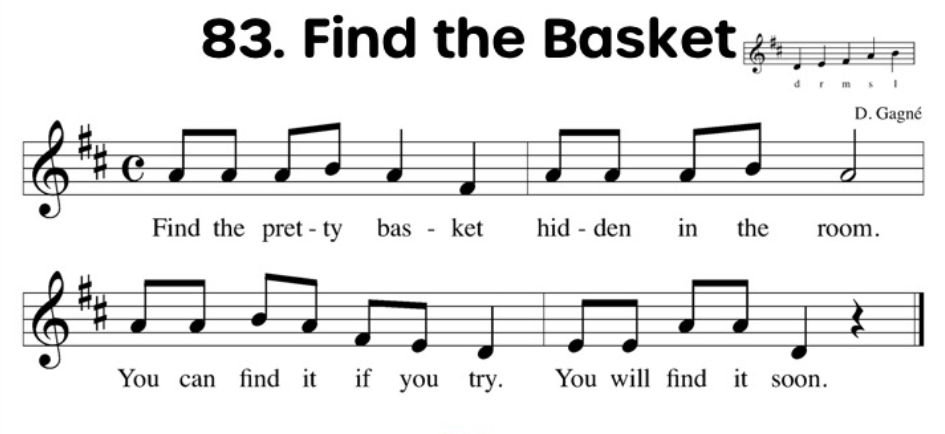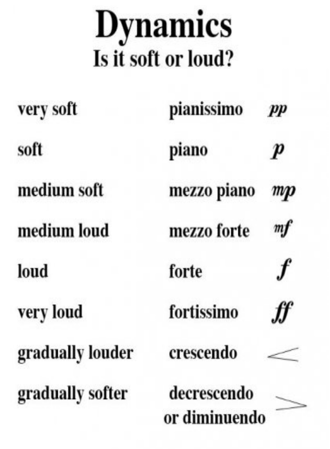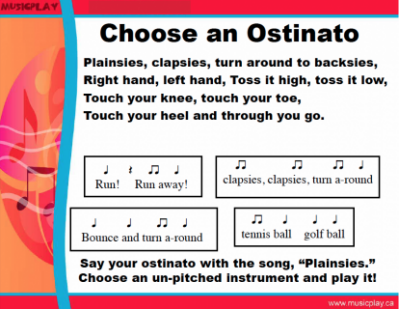Easter Games

Find the Basket
With Easter weekend coming up soon, I’d like to focus on a dynamics lesson from Musicplay 3, that uses the game, “Find the Basket.” There are similar games in Musicplay 1 and 2. If you teach Grade 4, 5, or 6 play the game with them. They still love to play games, and this is a great way to review dynamics.
Game Directions:
Choose one child to hide the Easter basket and another child to look for it. The child who is going to hunt for the Easter basket leaves the room while the hider hides it. When the finder returns, the class sings the song, singing softly when he/she is far away from the basket, and singing louder as he gets closer to the basket. The basket must be hidden in plain sight. The game continues until everyone in the class has had a turn to hide the basket or to find it. The game will go more quickly, with less student wiggling, if you choose a new “hider” and “finder” each round. If a child gets to “hide” the basket, he won’t get to be a “finder.” Keep track on your class list of who has had turns to hide or find. If you play the game for 5-10 minutes today, finish the game in your next music class, starting with the students who didn’t get a turn today.
Teaching Process/Suggested Activities:
Dynamics, drm sl, read rhythms. Song #83 “Find the Basket” is a great song to use to review dynamics. Review the meaning of dynamics terms and symbols with the students. Charts of dynamic and tempo terms are given in “The Listening Resource Kit Level 3” to enlarge on a photocopier and place on the wall. These charts provide a quick review any time you see these terms. Have one student come to the front of the room and point to the dynamic level that he hears as the game is played. A copy of the dynamics chart follows.

Extensions:
Playing and Creating:
This song is a good song to create an accompaniment for using tone bars, Orff instruments or Boomwhackers. Use the notes D and A to create an accompaniment
Music Reading and Writing:
Read the rhythms. If you are teaching solfege, have the students read the melody using the solfa notes drm sl. If not, use this melody to practice showing melodic contour - showing how the notes go up and down. This would be a good song to have the students draw the melodic contour.
Applying their Knowledge:
There are two excellent selections in the new collection, Listening Fun with Scarves and Tennis Balls to use to study how composers use dynamics in a piece: Lesson #1, “In the Hall of the Mountain King” and Lesson #2, “Bydlo,” from Pictures at an Exhibition. In each of these lessons, students discover the dynamic contrasts and discuss why and how the composer used a variety of dynamics.
If the students know that forte means loud, that is the knowledge level in Bloom’s Taxonomy.
When they apply that knowledge in the Easter Basket Game, that is the application level. When they listen to pieces of music, perceive and evaluate what dynamics levels the composer is using and why, they are evaluating -- - the highest level in Bloom’s Taxonomy. The newer version of Bloom’s Taxonomy is somewhat different, but the idea is the same. Knowing the term is not nearly as important as being able to apply the knowledge and then use that knowledge to analyse and evaluate.
Musicplay Workshops
Registration for Musicplay Live in Washington, DC; Austin, TX; and Virtual is open!
Check out our collection of FREE webinars here!

Musicplay Minutes Podcast

Listen to our newest podcast on ideas for St. Patrick's Day and Earth Day!

.png?width=483&height=405&name=MusicplayLive%202023%20Sing!%20Say!%20Dance!%20Play!%20With%20Artie%2c%20Denise%2c%20and%20JJ%20Locations%20FB%20(2).png)
